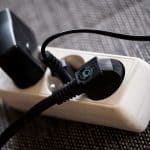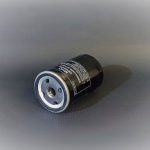Bleach is known as being one of the best cleaners out there, but its harmful properties are also equally well-known.
After using it you will notice a strong smell of bleach that signals toxic chemicals.
But can you take a bath or shower after cleaning it with bleach?
After rinsing and letting air dry bleach for a few minutes, you can use the shower or bath. Bleach can be rinsed off with water and that should reduce harm considerably. Bleach is highly corrosive if left on a surface for too long.
I’ll take you through why bleach is such an effective cleaner and why it can be dangerous to humans. We’ll also look at how to use bleach to get your bathrooms clean and also how to make sure that all traces are cleared up.

Can I Take A Bath Or Shower After Cleaning It With Bleach?
Bleach is certainly a powerful cleaner, able to remove stains, kill bacteria, and kill germs. This means also that it can help eliminate odors as it gets rid of odor-causing agents.
Given its power, bleach shouldn’t be used by being poured directly onto areas that need to be cleaned. While cleaning with bleach is safe when proper precautions are taken, you should still take care with bleach.
When bleach is diluted and not mixed with other cleaners it is a great, safe cleaner. But you should still rinse off bleach with water after it has been used to clean. This is relatively easily done in the shower as you can turn the showerhead to rinse.
Otherwise, grab a bucket and fill it up with clean water, and then use that to rinse all surfaces that bleach was applied to.
- Clean the shower or bath with a 1:1 ratio of bleach to a warm water solution.
Make sure the water is filtered so that it doesn’t contain salt or other contaminants. After letting the bleach solution stand for a few minutes, then use a brush to scrub before rinsing off.
After that, you should open windows and doors for ventilation to allow for air drying. The lingering smell of bleach will tell you whether you have successfully rinsed it or not, and you shouldn’t use the bathroom until this smell has mostly dissipated.
Do You Have To Rinse Bleach Off?
Bleach should be rinsed off for two main reasons.
- The first is that bleach is quite corrosive and will damage your skin upon contact with it. The other is that given bleach’s corrosive properties, it can damage certain materials over time, including tiles, grout, and other parts.
2. Your bathroom contains many non-porous surfaces such as tiles in order to stop water damage. However this means that such surfaces can be harder to clean with conventional cleaners, but bleach will be quite effective.
It does also have the issue that due to the non porosity, bleach will not be able to seep into the surface. This means the bleach will sit on the surface and continue to corrode unless wiped off or rinsed off.
How Long To Wait After Cleaning With Bleach?
Generally, the smell of bleach will be your test to know whether you have to wait longer.
If you’ve cleaned with bleach, rinsed off with water, and then let air dry in a well-ventilated area, it should not take longer than a few minutes.
If you’re still smelling bleach, give another rinse and let it stand for about 30 minutes.
To help with speeding up the process, you should properly mix your bleach solution. For general cleaning purposes, bleach manufacturers and health authorities suggest 1/2 or 3/4 cup of bleach per gallon of water.
One way to avoid leaving pools of bleach is to use a paper towel and lightly dampen it with bleach. Leave the paper towel on the area and check every few minutes to see if the stain improves. Rinse off any excess bleach with water.
Check out this useful video on bathtub cleaning mistakes with bleach.
Will Bleach Eat Through A Bathtub?
Bleach is highly corrosive and can do damage to many different surfaces including your bathtub if left over time. It will certainly cause issues for your skin if you do not take the proper precautions. It’s best to use rubber gloves and clean in a ventilated area.
- Pouring pure, undiluted bleach directly onto the surfaces or in your bathtub will likely cause the porcelain or other material to become discolored or faded.
You should try and use bleach sparingly, as constant use is not necessary and will cause damage to acrylic, enamel, and other ceramic-style materials.
Keep in mind that bleach is powerful enough to work even if you heavily dilute it. Follow the ratios suggested on the bottle and always mix it with water. This will make it safer for both you and the cleaning surface.
When cleaning the bathtub and shower, it’s best to remove shower curtains, rugs, towels, and other fabrics into a safe place away from the bleach. It only takes a single drop of even diluted bleach to cause discoloration.
If you have colored tiles or pigmentation in the bathtub, you’re better off trying to use oxygen bleach rather than chlorine bleach.
Oxygen bleach will be properly marked from its chlorine alternative and Amazon stocks Biokleen’s Oxygen Bleach Plus to help clean your bath.
Even heavily diluted, chlorine bleach is likely to cause issues with nonwhite surfaces, particularly it will cause colored pigment to fade. Other home remedies may be more successful, such as mixing water, white vinegar, and detergent.
A paste of baking soda and water can also be applied to grout or tile and left for a few minutes to remove stubborn stains if bleach is not an option.





